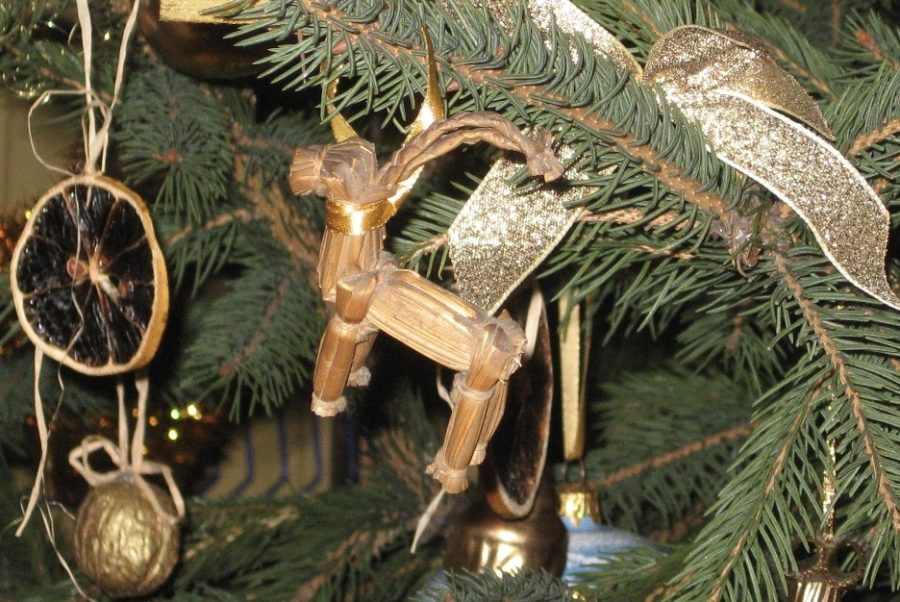Critics continue to point to a Christmas conspiracy
A traditional Christmas tree decorated with Pagan symbols.
December 19, 2022
The beginning notes of “Rockin’ Around the Christmas Tree” begin to play as my family places ornaments on our tree. The smell of the balsam brings to mind a question: whose idea was this? What does an adorned tree have to do with the birth of Jesus Christ? Later, typing my questions into various search engines, I find that Christmas trees have absolutely nothing to do with the story of Christmas at all. In fact, as I fall deeper into the rabbit hole, I find that many aspects of Christmas have surprisingly pagan origins.
Looking at a calendar, the date December 25th is sure to conjure images of Good Ol’ Saint Nick and gingerbread men no matter your religion. Yet surprisingly, before Christmas was even celebrated, the twenty-fifth of December marked a very different, very pagan holiday: Juvenalia. The Roman holiday rejoiced in the birth of Mithra, the god of the sun.
Many Christians argue in defense of the chosen date, saying it was calculated from the known date of Jesus’s conception, March 25th, as mentioned in the bible. Doing the math, this explanation makes sense. But that doesn’t stop critics from pointing to other areas of suspicion.
Christmas trees began to appear in the discussion of this conspiracy when participants noticed yet another striking similarity to pagan practices. Evergreens were also decorated in celebration of the winter solstice by pagans across the globe. Even the apples used to decorate their trees are reflected in our red ornaments.
To add to the intrigue, mistletoe, a prevalent symbol in the celebration of Christmas, was also originally found in Pagan cultures. In fact, mistletoe was considered such a powerful heretic symbol that it was banned from English churches. All of these coincidences continue to make critics wonder what hedonistic truths lay in the story of Christmas.







